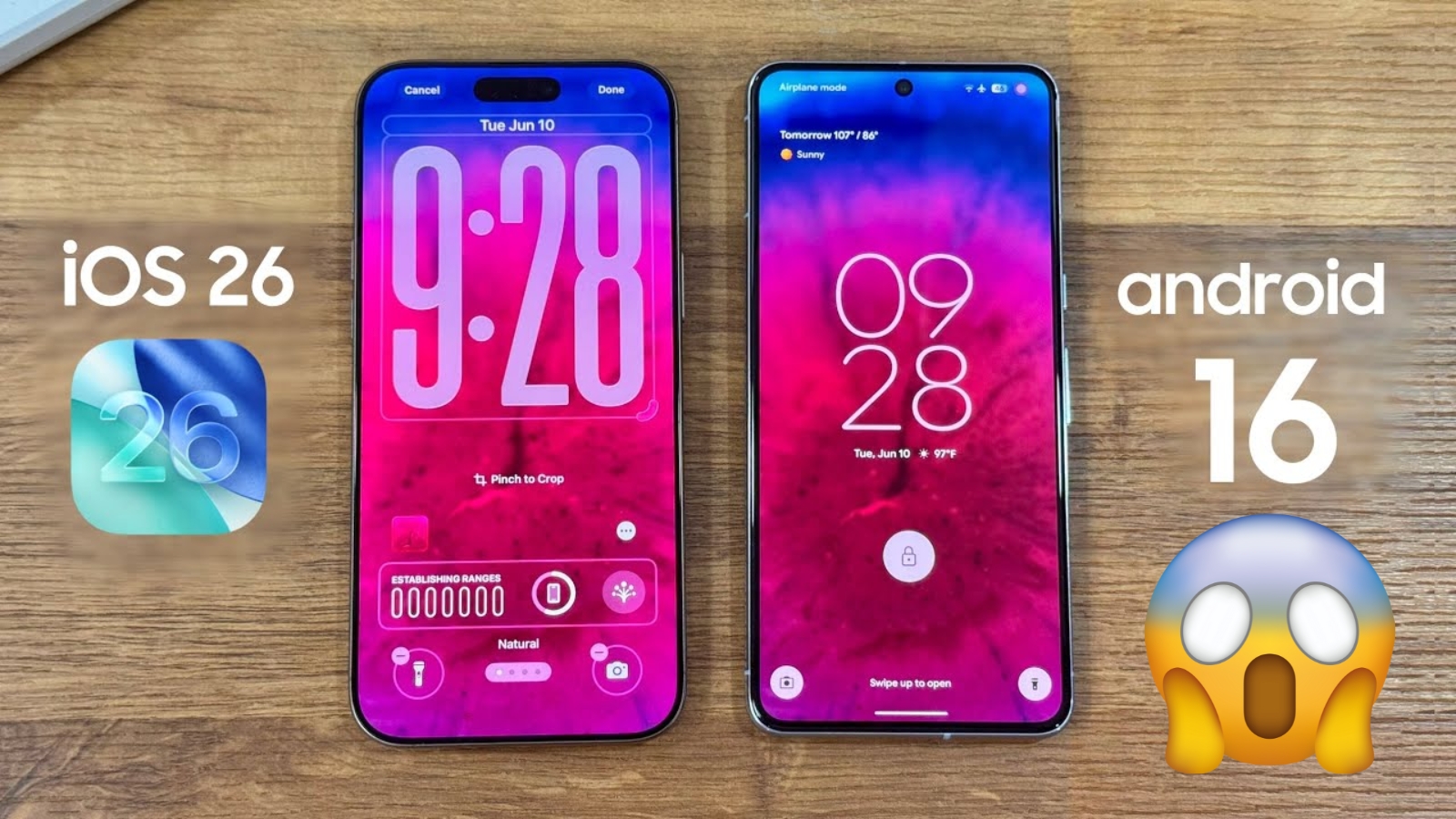Your phone is about to look completely different. Both Apple and Google are rolling out their biggest visual updates in years, and the changes go far beyond just prettier icons. Whether you’re team iPhone or Android, these updates will change how you interact with your device daily.
What’s Actually New This Year
Design Takes Center Stage
Unlike previous years where new features dominated headlines, 2025 is all about how your phone looks and feels. Apple’s iOS 26 introduces “Liquid Glass,” a translucent design that makes interface elements behave like real glass with subtle reflections and depth. Everything feels more fluid, with icons and widgets looking like they’re shimmering through colored glass layers.
Google’s Android 16 debuts Material 3 Expressive, bringing bold colors back with more dynamic theming and enhanced customization. The update builds on Material You but takes color and personalization much further.

Features You’ll Actually Use
iOS 26 Finally Catches Up
Apple is adding features Android users have enjoyed for years. Call Screening automatically picks up unknown calls, asks who’s calling, and shows you a transcript so you can decide whether to answer. Hold Assist keeps your spot in phone queues while you do other things.
Messages gets custom backgrounds for conversations, Apple Music adds AutoMix for seamless song transitions, and live translation works across calls and messages.
Android 16 Goes Deeper
Android 16 introduces desktop-style windowing for tablets and foldables, custom keyboard shortcuts, and enhanced multitasking. The focus remains on giving users more control and customization options.
The Real-World Impact
Daily Usage Changes
Battery Performance Galaxy S25+ with Android 16 achieves impressive 16 hours and 55 minutes in web browsing tests, while iPhone 17 Air users see around 13 hours. Android’s smart battery scheduling gives it the endurance advantage.
Privacy vs. Openness Apple’s iOS 26 continues leading in privacy with features like private cloud compute, running AI models locally or sending encrypted data that even Apple can’t read. Android focuses more on proactive assistance and cross-platform integration.
Design Philosophy Comparison
| iOS 26 Liquid Glass | Android 16 Material 3 Expressive |
|---|---|
| Translucent, minimal aesthetic | Bold colors, dynamic theming |
| Emphasizes content over interface | Celebrates vibrant, expressive design |
| Glass-like depth and reflections | Customizable color schemes |
| May cause visibility issues with light wallpapers | Enhanced widget personalization |
| Consistent across all Apple devices | Open to third-party customization |
| Focus on elegance and simplicity | Focus on individuality and choice |
The Learning Curve
iOS 26 Challenges The new transparent design can make text hard to read with bright wallpapers, though a “Reduce Transparency” toggle helps. Some users find the glass effect more style than substance.
Android 16 Advantages Google’s regular updates mean Material 3 Expressive feels less jarring since users are accustomed to gradual changes. The customization options let you adjust the look to your preferences.
Which Update Suits You Better?
Choose iOS 26 If You Want:
- A phone that “just works” without tweaking
- Strong privacy protection
- Seamless integration across Apple devices
- A premium, polished experience
- Long-term software support
Choose Android 16 If You Prefer:
- Customizing your phone’s appearance and behavior
- More control over apps and settings
- Better battery life on most devices
- Flexibility to change default apps
- Cutting-edge features first
Neither platform offers features that dramatically change daily phone use, but both provide significant visual refreshes. iOS 26 brings Apple’s interface into the modern era while maintaining its signature simplicity. Android 16 doubles down on what makes Android special: choice, customization, and user control.
The decision comes down to ecosystem preference and personal style. If you want a phone that fades into the background and works seamlessly, iOS 26 fits perfectly. If you want your phone to feel uniquely yours with room to experiment, Android 16 delivers.
Both platforms are more capable and user-friendly than ever. Your choice depends on whether you value a curated, consistent experience or the freedom to make your device truly personal.
Frequently Asked Questions
Q: Will iOS 26 work on older iPhones?
A: iOS 26 supports iPhone 11 and later, though advanced Apple Intelligence features require iPhone 15 Pro or iPhone 16 models.
Q: When can I download these updates?
A: Both updates launch in fall 2025, with public betas available in July for iOS 26 and ongoing testing for Android 16.
Q: Do I need to upgrade my phone for these features?
A: Most features work on existing compatible devices, though some advanced AI features require newer processors.
Google Pixel 10 Full Lineup Leaked with All Key Specs and Design
